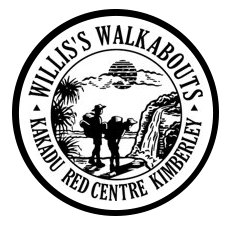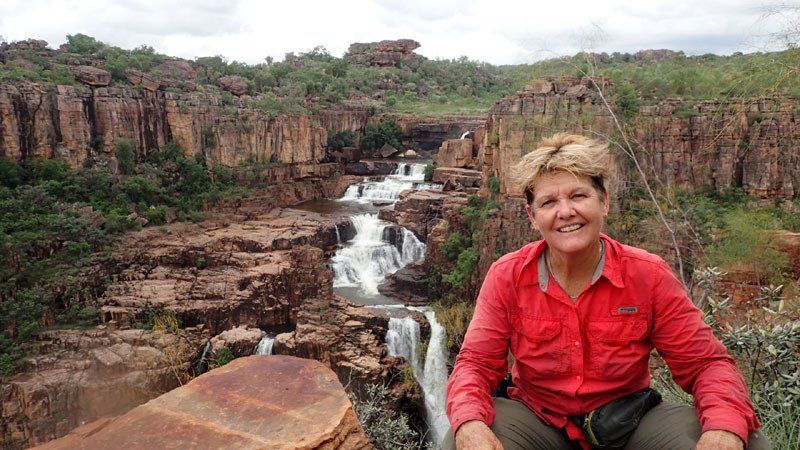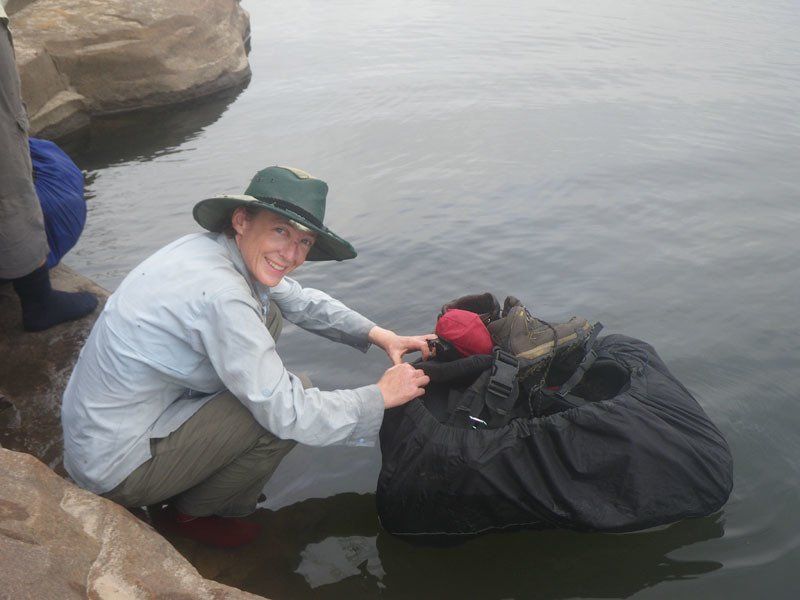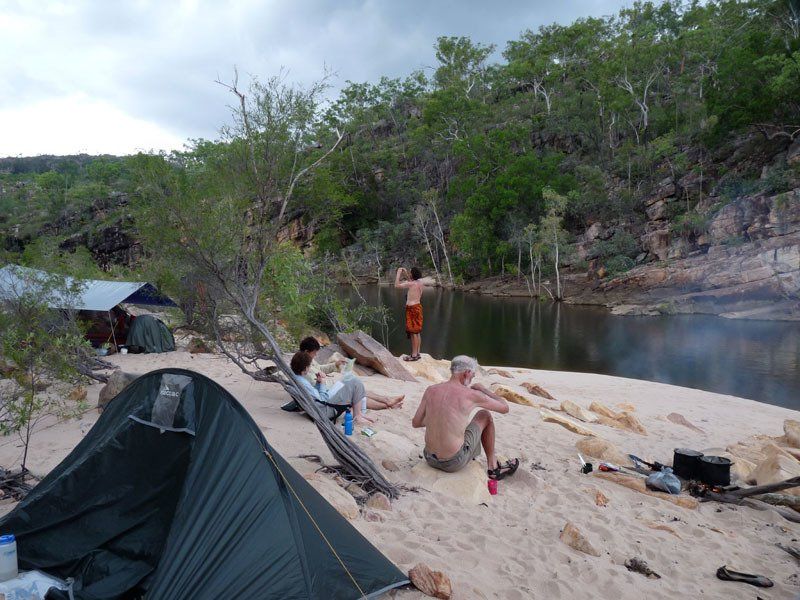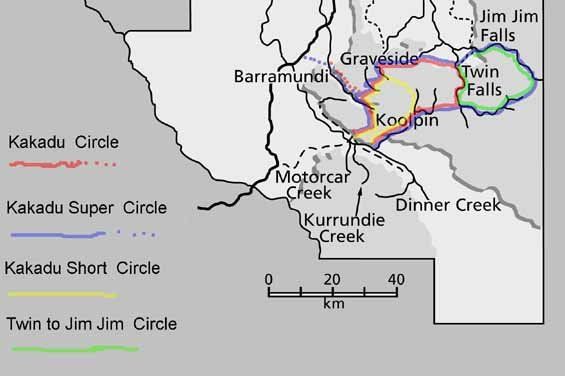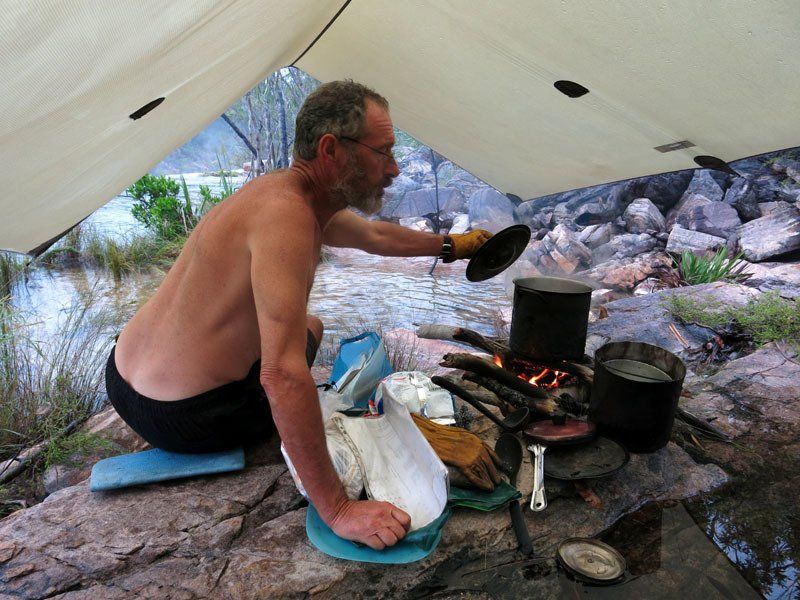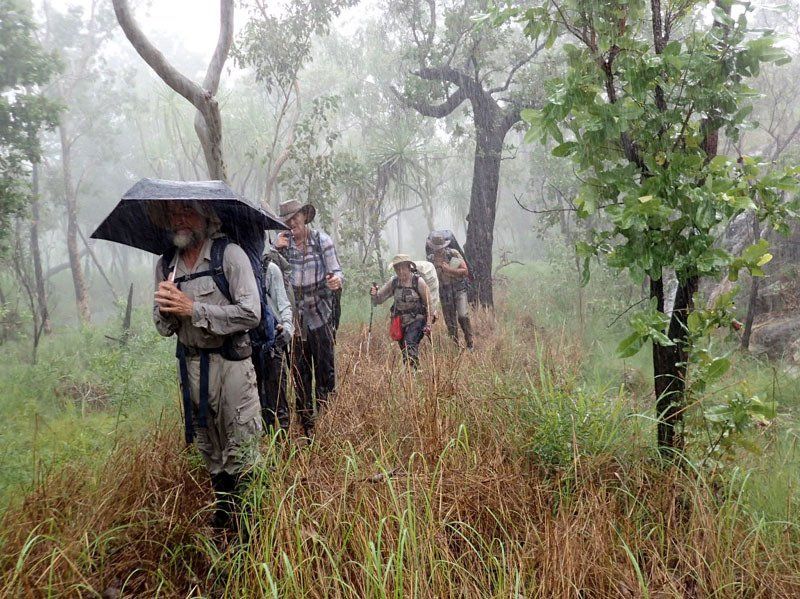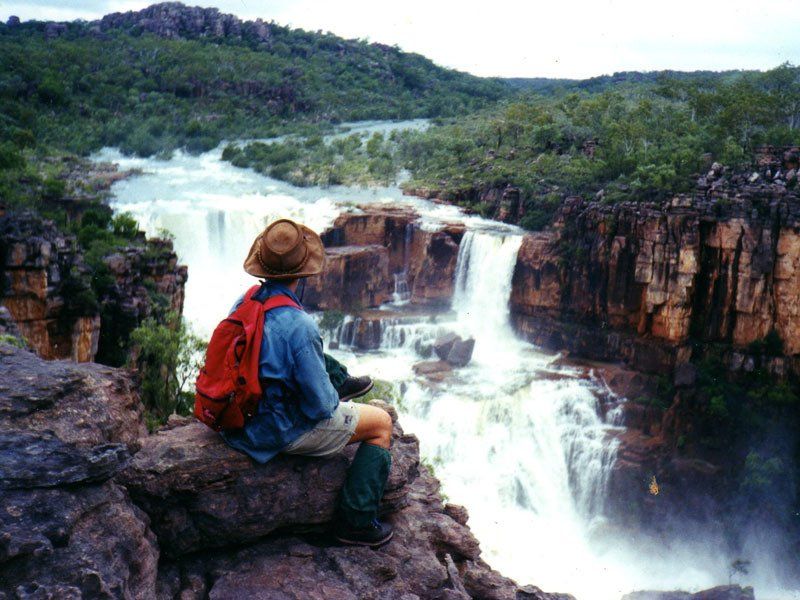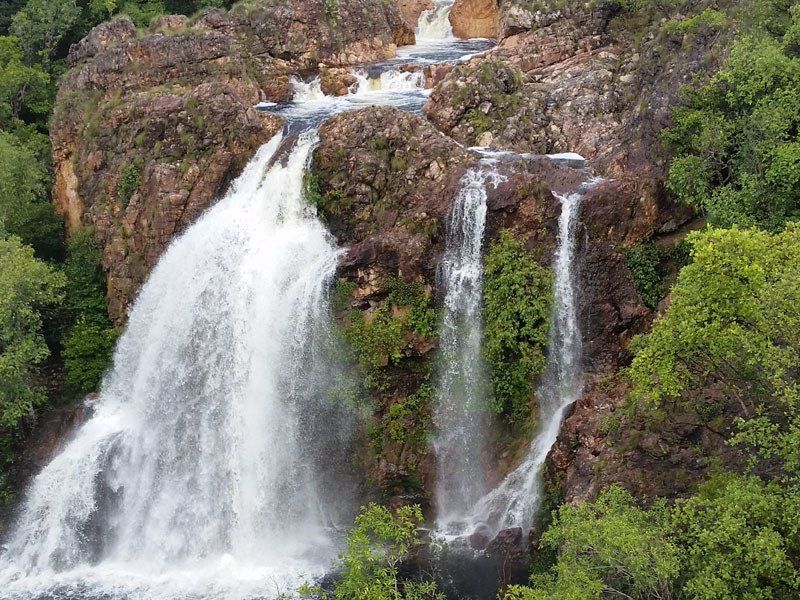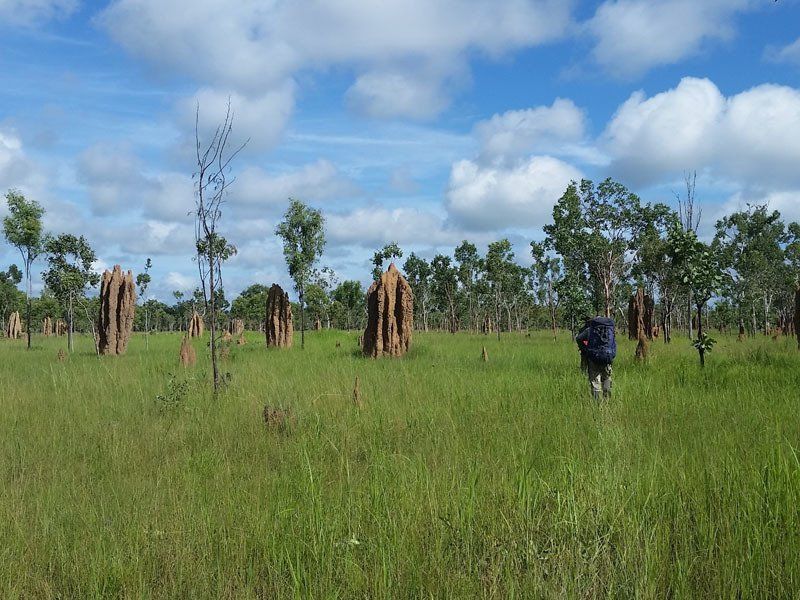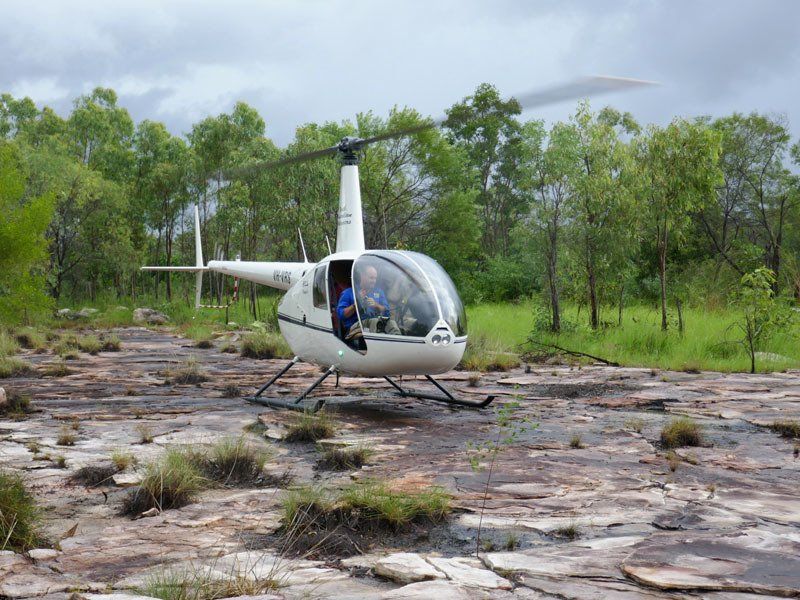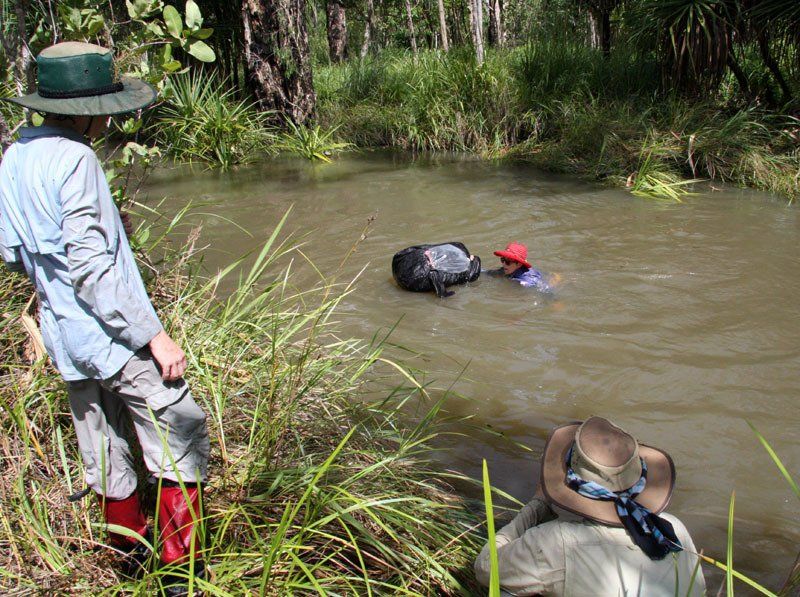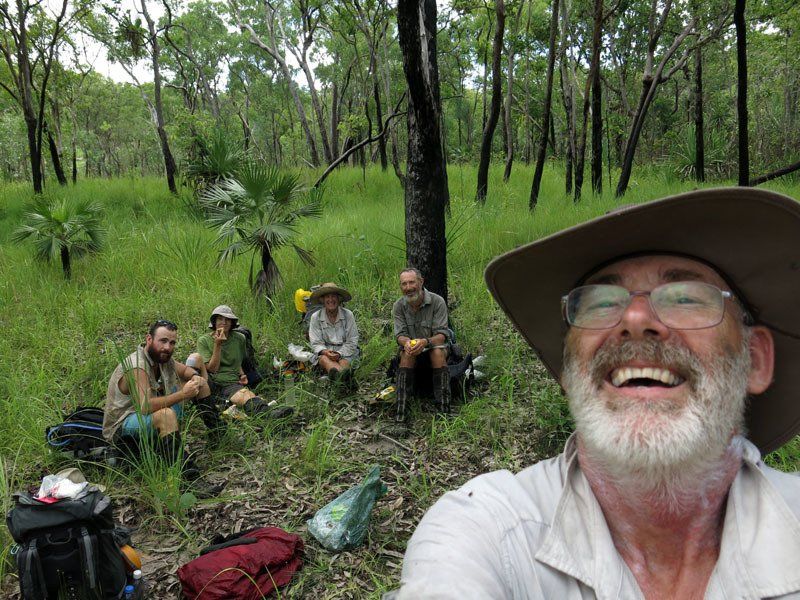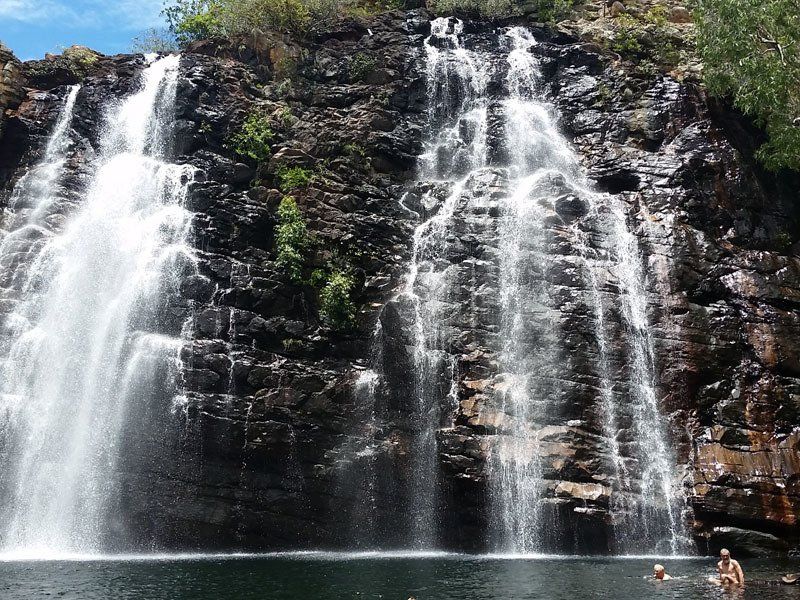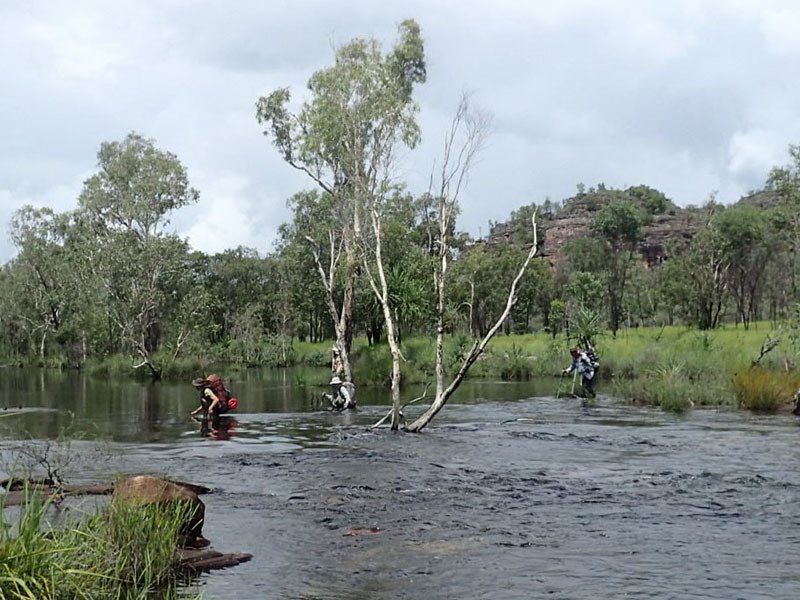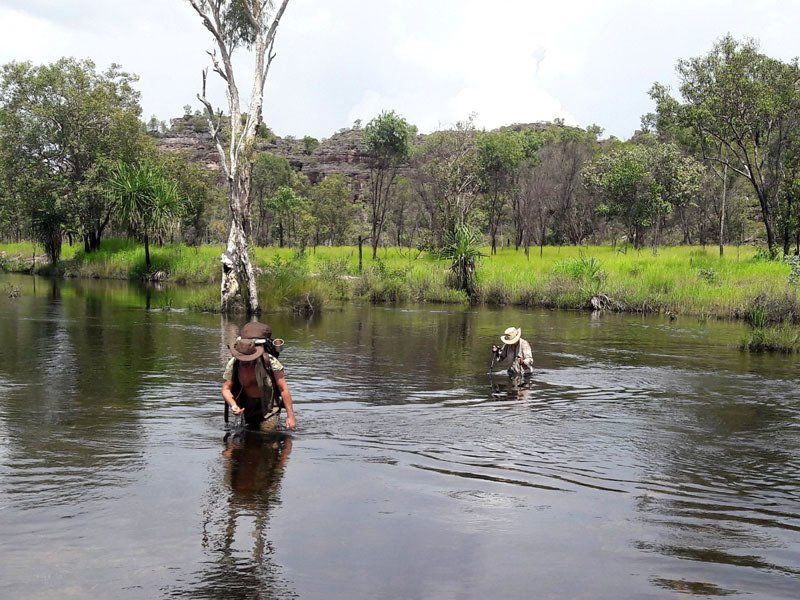EXPERIENCES / KAKADU
Kakadu Super Circle No. 1
Overview
Our longest wet season expedition in Kakadu.
- The only tour where you get to visit Jim Jim and/or Twin Falls during the wet season. Other tours can fly you past, but no one else can bring you up close.
- Three or four week options. those who book first get to choose.
- Waterfalls, waterfalls and more waterfalls all at their wet season best.
- There is a food drop but we are not permitted to bring people in or out except in an emergency.
- You get as far into the back country as is legal to go.
- The trip finishes with a Yellow Waters cruise and a night in accommodation.
- To take part you need above average fitness, the ability to swim at least 100 metres (there are a number of river crossings which may require floating your pack), a sense of adventure and a desire to see the best that Kakadu has to offer. You do not, however, need to be a superman or superwoman.
During this epic Kakadu Super Circle you will experience dramatic changes in the landscape. From small scrubby vegetation to towering paperbarks, flat plains to rocky outcrops. All the big creeks and waterfalls will be flowing but at this time of year the smaller creeks and waterfalls should be flowing. This is what makes this trip unique and we have the time to explore some of these. And, of course, there are multiple swims everyday; in creeks, in little pools big pools and everything in between.
Your walk starts at the South Alligator bridge, a 330 km / 5 hour drive from Darwin.
It is a flat 7 km walk along the gravel road to Flying Fox Crossing. If things go to plan, we should be able to drive these first 7 km.
We leave the road and our adventure begins.as we head upstream along the South Aligator Creek and make our first camp after we cross Koolpin Creek.
It is 8 km to the entrance of Jarrangbarnmi (Koolpin Gorge). A short steep climb over a ridge brings us above the first waterfall and therefore out of range of the estuarine croc that were a potential problem below.
From this point onwards swimming is no longer a problem AND you have finished the most difficult climb of the entire trip.
Koolpin’s watferalls are spectacular, the pools are perfect for swimming, the views are magnificent. We camp on a sandy beach right next to the creek.
When we leave the Gorge we walk through an open plain and enter monsoon rainforest as we head for Twin Falls Creek.
From the upper reaches of Twin Creek we cross over to Jim Jim Creek. The walk along Jim Jim Creek is generally flat and easy down to the top highest waterfall in Kakadu, Jim Jim Falls. To say the view from here is awesome is an understatement. Our first helicopter food drop should be here.
Our route then takes us back to Twin Creek to the Amphitheatre Falls. If we have time we will do a detour to the top of Twin Falls otherwise we walk upstream to the upper reaches of Koolpin Creek. Our second food drop should be somwhere on Koolpin.
Depending on the conditions and how well we are moving through the country we may cross to the top of Graveside or go directly to Cascades Creek or take the shortest route to Maguk. Needless to say whichever route is taken you are rewarded with beautiful views, stunning landforms and breathtaking views.
We finish the walk along the (closed) Maguk 4WD track to ur pickup and drive to Cooinda for the Yellow Waters cruise on the Kakadu Wetlands. We overnight at Cooinda or in Jabiru before driving back to Darwin on the last day.
Details
DATES
12 January to 2 or 9 February
PRICES
3 week list price : A$7495
4 week list price : A$8995
GROUP SIZE
4 - 12 guests
CAMP SITES
Mix of flat rock ledges, sandy beaches and grassy areas. Most sites are good to excellent but we have to avoid some of our dry season campsites which could get flooded. You are unlikely to see anyone else anywhere along the entire route..
ART
We visit a variety of art sites
SWIMMING
This is the best time to see Kakadu’s waterfalls. We will have good pools at almost every campsite and lunch spot.
WILDLIFE
Birds are always present but spread out at this time of year. You are unlikely to see many large animals. The Yellow Waters cruise is excellent for birds, many of which you are unlikely to see on the walk. It also gives you a good chance to see large estuarine crocodiles.
CLIMATE
It will be hot (although not as hot as you might think) and it will be humid. The average daily maximum is 33-34ºC (91-94ºF). If we get a spell of relatively dry weather, the temperature could reach 40ºC (104ºF). The average minimum is 24ºC (75ºF). Sleeping bags are not needed.
Rain is almost certain. On average it will rain two days out of three, mostly in short, sharp bursts. Averages can, however, be misleading. Occasionally, it might rain for days at a time.
FIRE
We plan to have a campfire every night and will have hot water available every morning. We sometimes have our fire under it's own shelter.
WALK RATING - MODERATE
Terrain
There are a few steep climbs, none of which is over 200 m. As short as they are, these climbs are strenuous. Some may require using your hands to hold on as you climb up or down. None are technically difficult. None require ropes or other special equipment. There will be some places where you have to step from stone to stone as you walk along the edge of a creek.
You will definitely have to float your pack across one or more flooded creeks.
If you can’t swim at least 100 m unaided, do not do this trip.
You don't need to be a great swimmer, but you do need to be able to swim.
Even in the boggiest of seasons, Kakadu has nothing that can compare with the mud of Tasmania. However, if you have a particularly wet year, you may find yourself sinking up to mid calf regularly on some days.
Vegetation
Much of the walking is through relatively flat, open woodland with a grassy understorey. Some short sections of grass may hide a broken rocky surface where you will have to be particularly careful. There may be some slow sections where you will have to pass though thick scrub.
The vegetation can vary dramatically from year to year depending on when last burnt. The spear grass normally reaches its peak in March, often three or four metres tall in some areas (much shorter in others). We may encounter short sections of partially collapsed and seeding spear grass during some portion of the trip, but this early it is unlikely that there will be much.
Distance
4-6 hours per day. A few days will be longer. The first full day of section two is normally the longest of the trip.
Pack Weight
You need to carry 10-11 days food. This will include about 2½-3½ kg of the evening meals. You do not need a sleeping bag but you do need a tent with a fly.
Unless you have walked in the wet season before, please do not book this trip until you have read our
Wet Season page. This links to two additional pages, just as important if you are to enjoy the trip.
Download detailed trip notes
12 January to 2 or 9 February
Download
Itinerary
*This itinerary is subject to change
